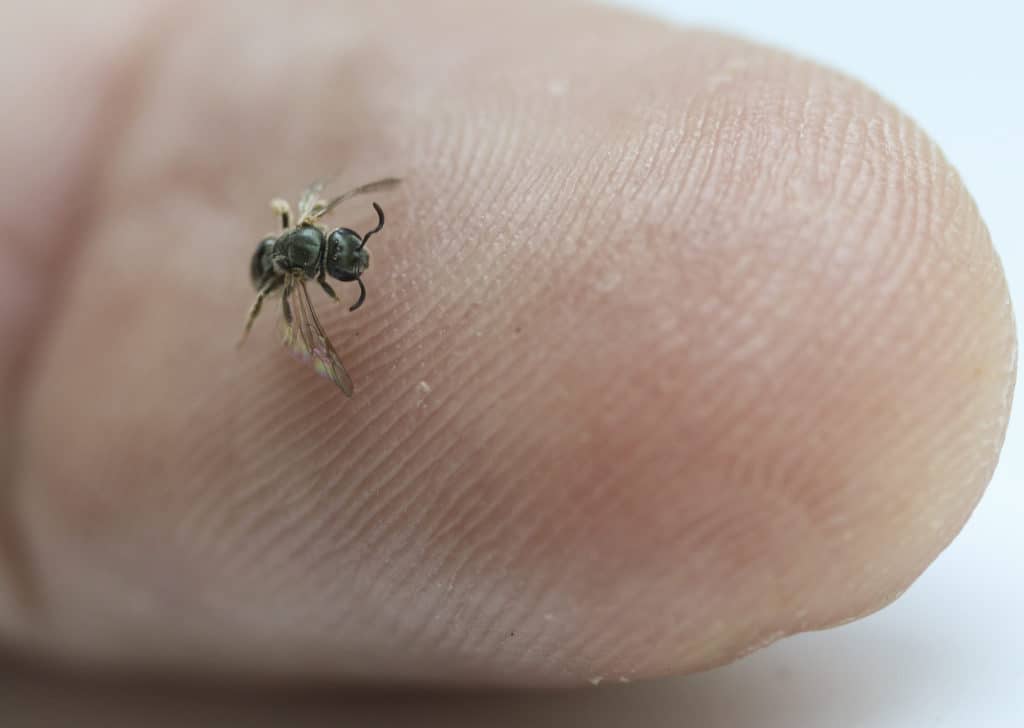Creature Feature

A Bratty Little Stinger
By Wayne Bierbaum
I was doing yard work on a hot and humid day and I was drenched with sweat. When I picked up a bunch of weeds I had just pulled, I felt a sharp sting in the crook of my elbow. I looked at the spot and there was a small black insect. A sweat bee got me.
I seem to get stung by one about once a year. The sharp pain is not very bad but it is annoying and I worry that I will eventually become allergic to bee and wasp stings.
Sweat bees are in the halictidae family and are the smallest of the bees, measuring 5 to 10mm. There are many varieties of sweat bees, in several colors. The most colorful is a metallic green but there is also a bright yellow striped one. The one that stung me was a common dark green one.
Like all bees, sweat bees feed on flower pollen and nectar. Unlike the honey bee, they are solitary and only briefly pair for propagation. The female will lay eggs over the summer in nests in old wood and sometimes steal nests of other wasps or bees. The female supplies the nest chamber with pollen for the young to live on as they develop from a pupa into a flying insect. The sweat bee will overwinter as a pupa or an immature winged form.
Like many animals sweat bees seek out sources of minerals, like salt. They can be seen drinking at the edge of mud puddles and it’s what makes them attracted to our sweat and other sweating mammals such as horses. If you happen to attract one, just gently brush it off. They sting when they are squeezed or injured.
These tiny bees are very common and are extremely important for pollination. They are sensitive to insecticides and have suffered a drop in their population. Avoid using insecticides on flowering plants and provide nesting areas such as bee hotels.
